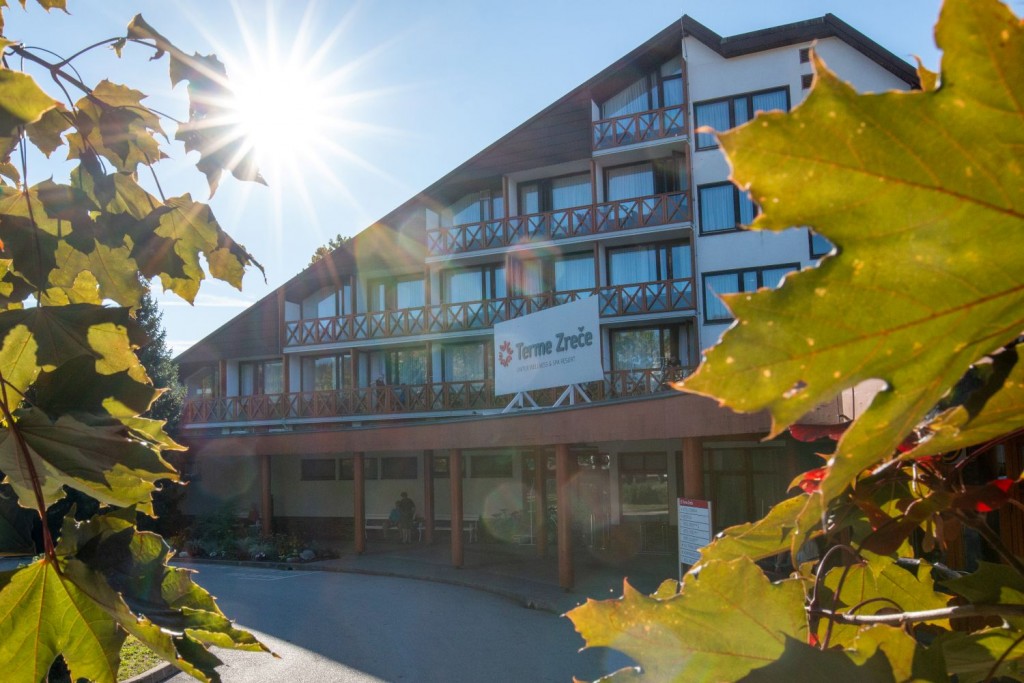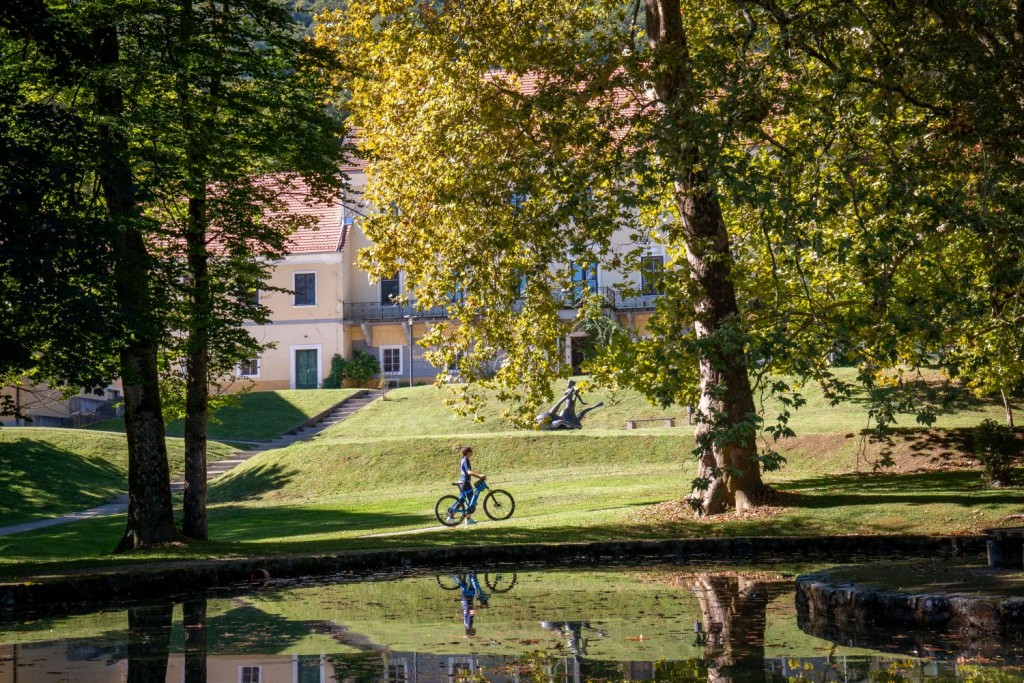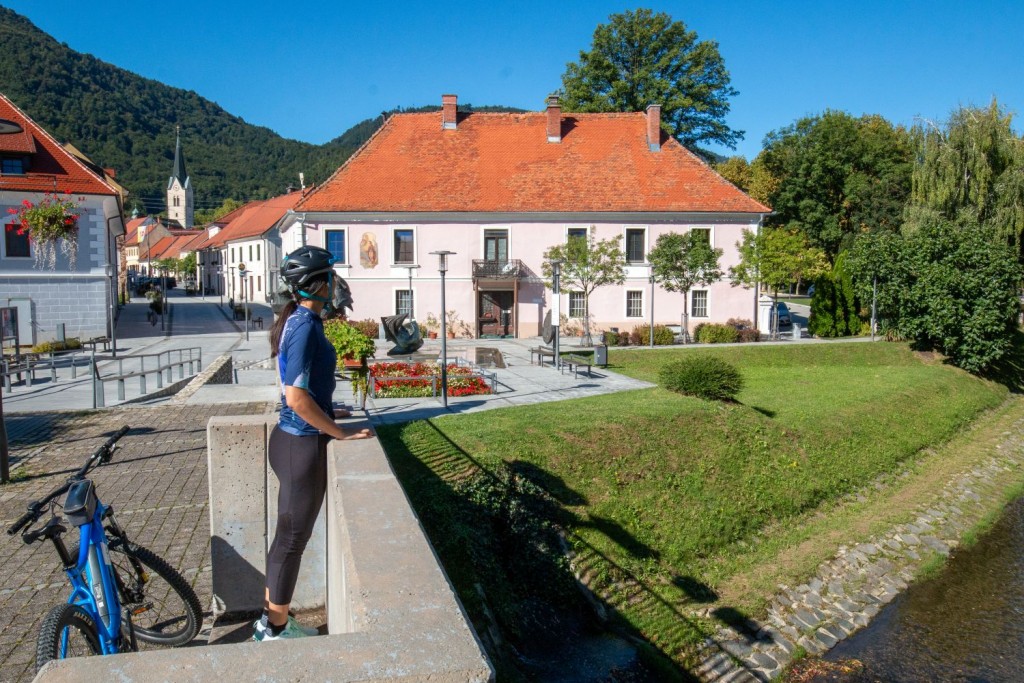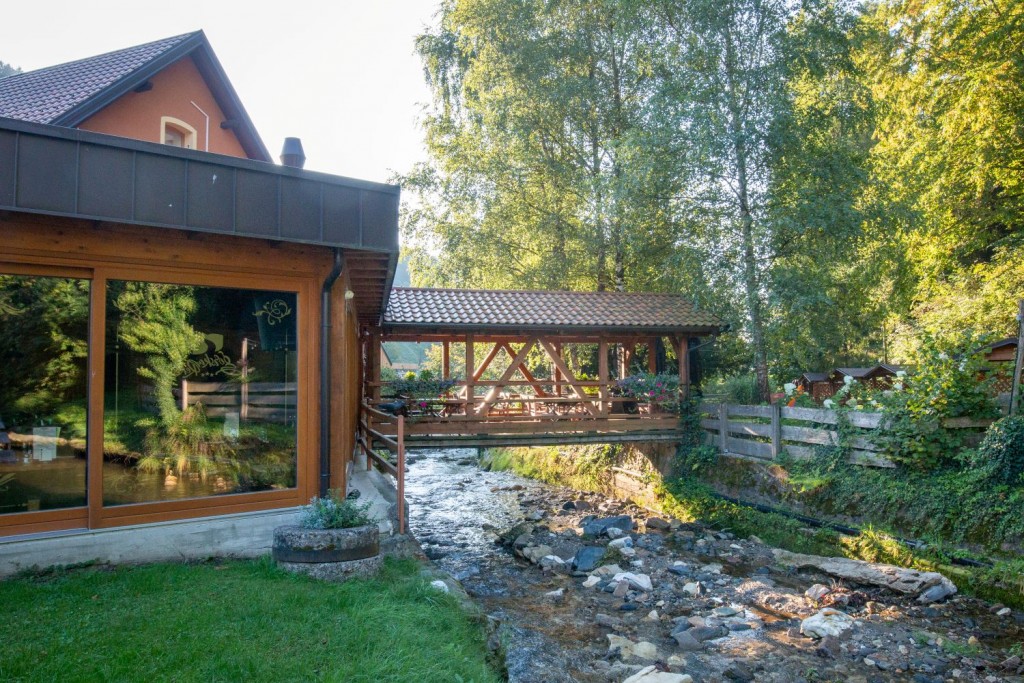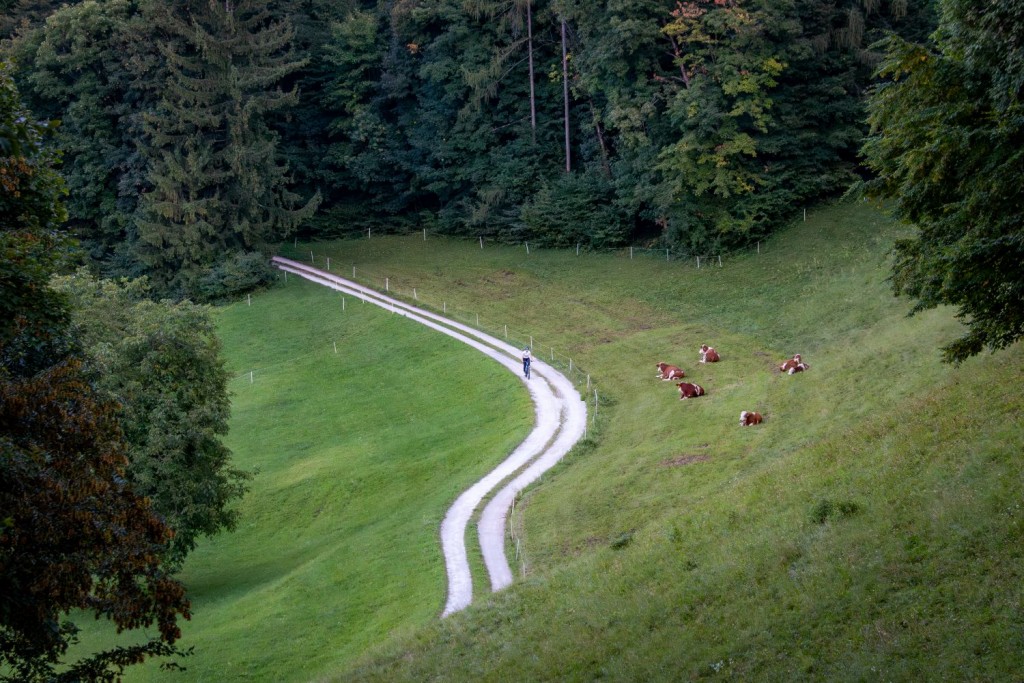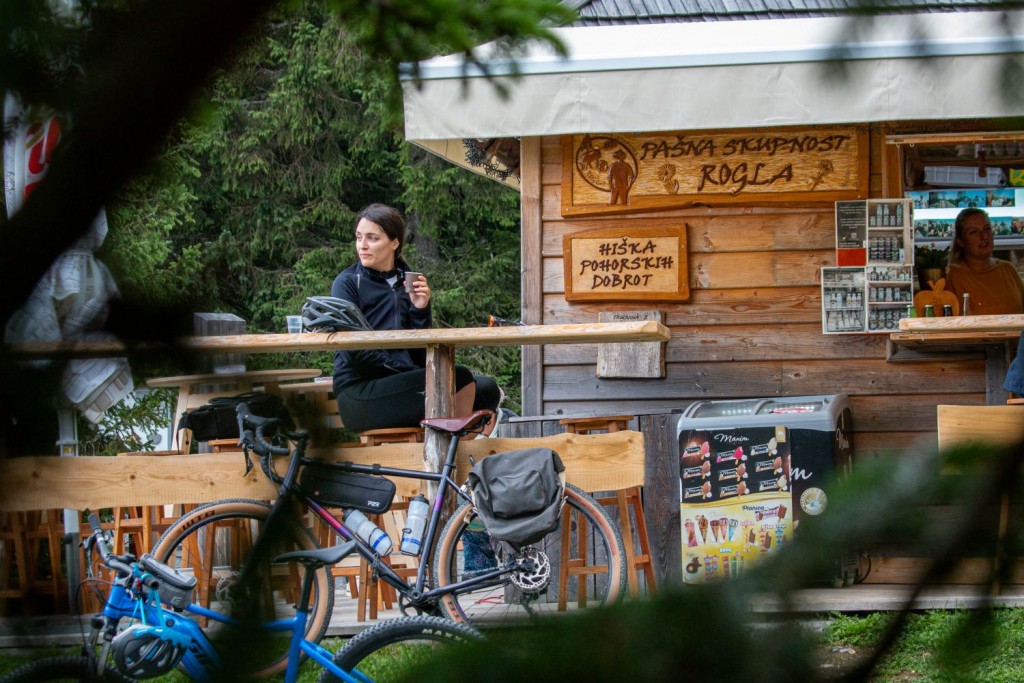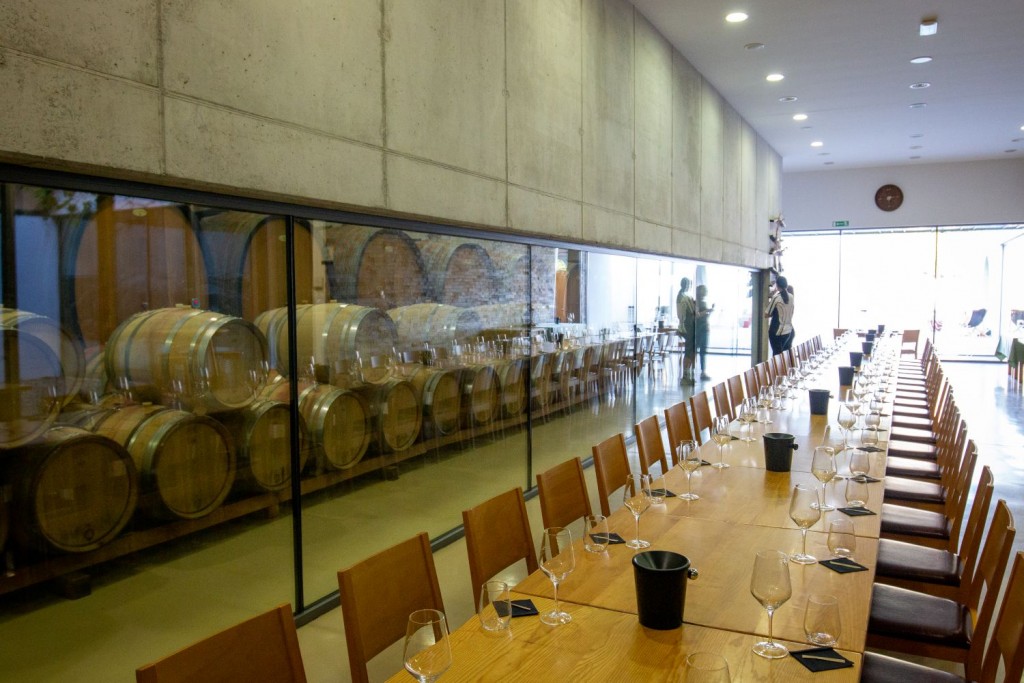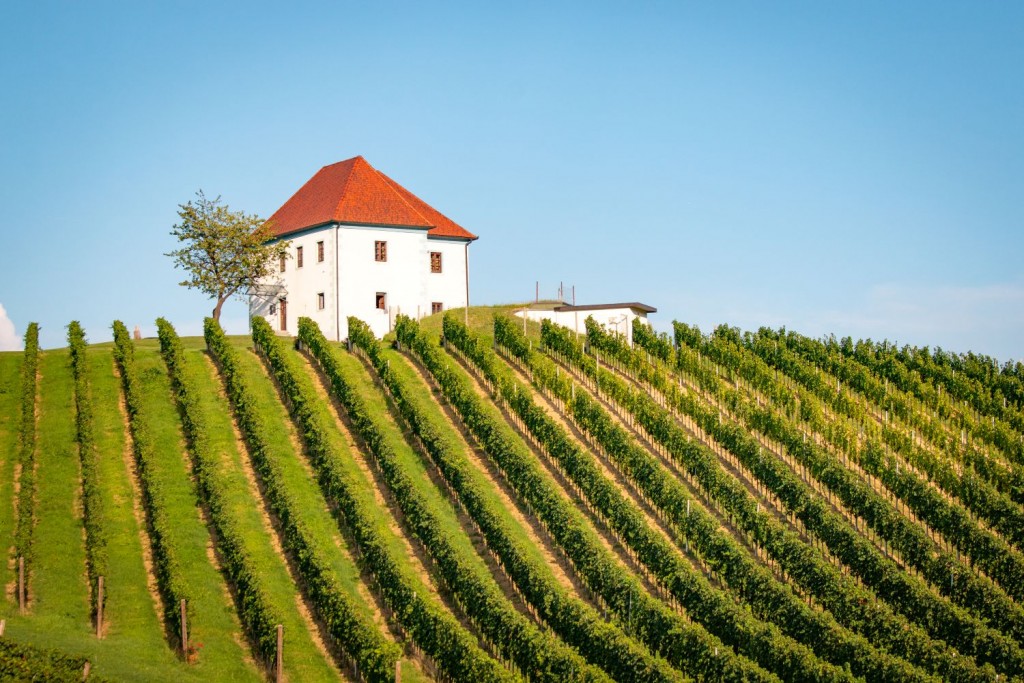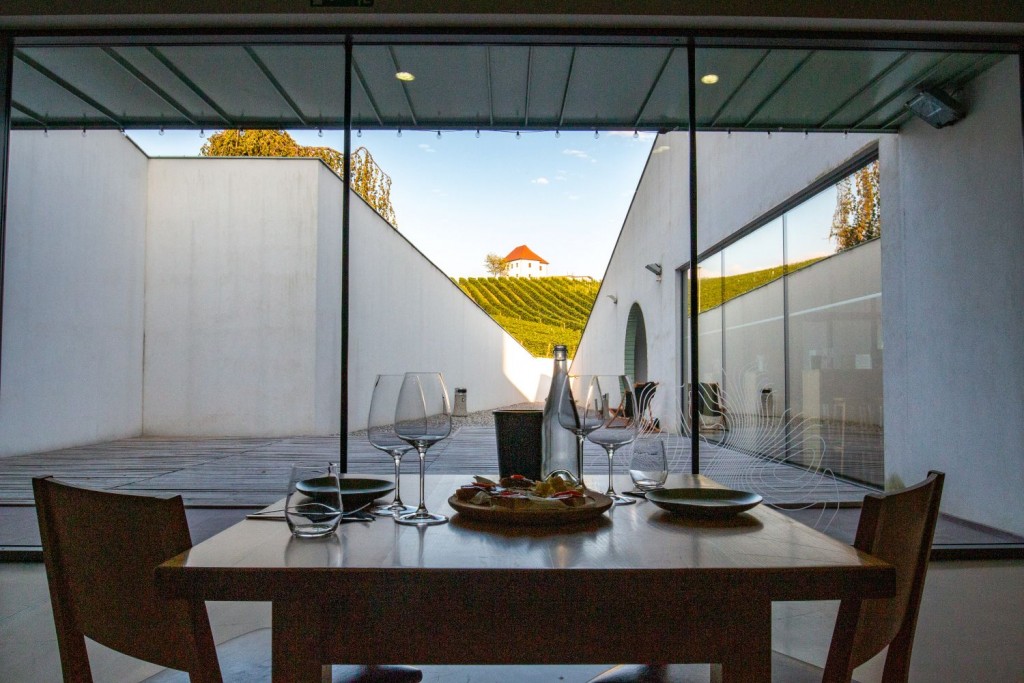48 sustainable hours: two gravel cycling trips around Rogla and Pohorje

We cycled two asphalt–gravel loops starting from Zreče: the first, slightly easier, led us south through Slovenske Konjice, past the Žiče Charterhouse, the Partovec pond, Oplotnica, and the Oplotnica Gorge; the second, somewhat more demanding, went over Zreče Pohorje to Rogla and then back past forests and pastures to the wine hills, where a long cycling day ended with a tasting of golden drops. If you’re looking for an idea for a cycling trip in this part of Slovenia, read on.
When planning this cycling loop together with local representatives, I suggested showcasing the Rogla–Pohorje destination, a Slovenia Green Gold destination, with the help of what is probably the most popular type of bike at the moment. The gravel road bike, a kind of hybrid between a road and off-road bike, a universal machine that combines the speed of road (racing) bikes with the versatility of mountain (or trekking) bikes. To cut it short: Do you have any nice gravel roads? We do!
And so, they mapped out two loops, both starting from Zreče: the first headed south, along the edges of Pohorje, the second north to Rogla, which is increasingly shifting from a ski resort to a year-round tourism hub. Various cycling routes across the Rogla–Pohorje destination, including the ones we rode, can be found on their website. Ready? Let’s go!
The views of fields, pastures, and forests are wonderful, just be prepared that on about 18 kilometers you’ll have to climb a solid thousand meters of elevation.
Self-service buffet as a local market
It started with breakfast at the Terme Zreče Hotel. Although it’s a proper hotel and not a tourist farm, the plates feature plenty of local produce. “Wanting to offer our guests as many local dishes as possible already at breakfast certainly means quite a bit of extra work, because the products are very seasonal,” explains Matej Krošelj, head of hospitality at the Slovenia Green certified hotel. Still, in their own kitchen and in cooperation with surrounding farms, they strive to keep the path from source to plate as short as possible. Eggs come from the Bandur and Klinar farms, cheeses and yogurts from Lamperček farm, curd from Mrzdovnik, seasonal vegetables from the Lešnik, Gosak, and Gričnik farms, bread from the wood-fired oven of Črešnar farm, honey from the Žvikart beekeepers, and jams (six different kinds were on offer at the beginning of autumn!) are cooked in their own kitchen.
Terme Zreče, a cyclist-friendly accommodation, is primarily visited by Slovenians, guests from former Yugoslav countries, as well as Hungarians and Italians. Recently, visits from foreign cycling groups have increased, utilizing the location as a base for exploring a wider area, from Prekmurje to the Logar Valley. But for Iza and me, the immediate surroundings were more interesting.
I’ve driven through Slovenske Konjice many times, but never by bike, and above all, never stopped—except at the gas station. That’s why traveling by bike is so great: you get to know the places you pass through much better. Even if you just pedal through the pleasant old town center, past Trebnik Manor with its beautiful park that’s open to all visitors. A roughly five-kilometer gravel climb towards Konjiška gora raises the heart rate, and from Treh Križev on Konjiška gora an asphalt descent leads to the Žiče Charterhouse.
- You can start or end your cycling trip at Terme Zreče.
- A peaceful park in the heart of Slovenske Konjice
- The cycling route takes you through the center of Slovenske Konjice.
Žiče Charterhouse: restored with care
At Gastuž, the oldest still-operating inn in Slovenia, built in 1467, we refreshed ourselves with homemade iced tea and strudel and took a walk—cyclists, don’t you dare ride your bike into the monastery walls!—to the Žiče Charterhouse. Now this is a landmark where you should definitely take your time. By paying the entrance fee, you get an audio guide (also available online), but I also recommend a look at the towers and the wall under the renovated roof, which is possible by prior arrangement. After the monastery had been a ruin for nearly 200 years, it was restored between 2019 and 2022—just enough that you can now feel both: the grandeur of the Carthusian monks’ former home and the timelessness of nature, which, had man not intervened, would have slowly devoured the old stone walls. You can also walk along the 800-meter-long themed path of Silent Energies of the Žiče Charterhouse, where you can taste the second most powerful energy water in Slovenia. And if you’re already hungry, the Gastuž inn also houses the Spargus restaurant. But we still had to earn our lunch…
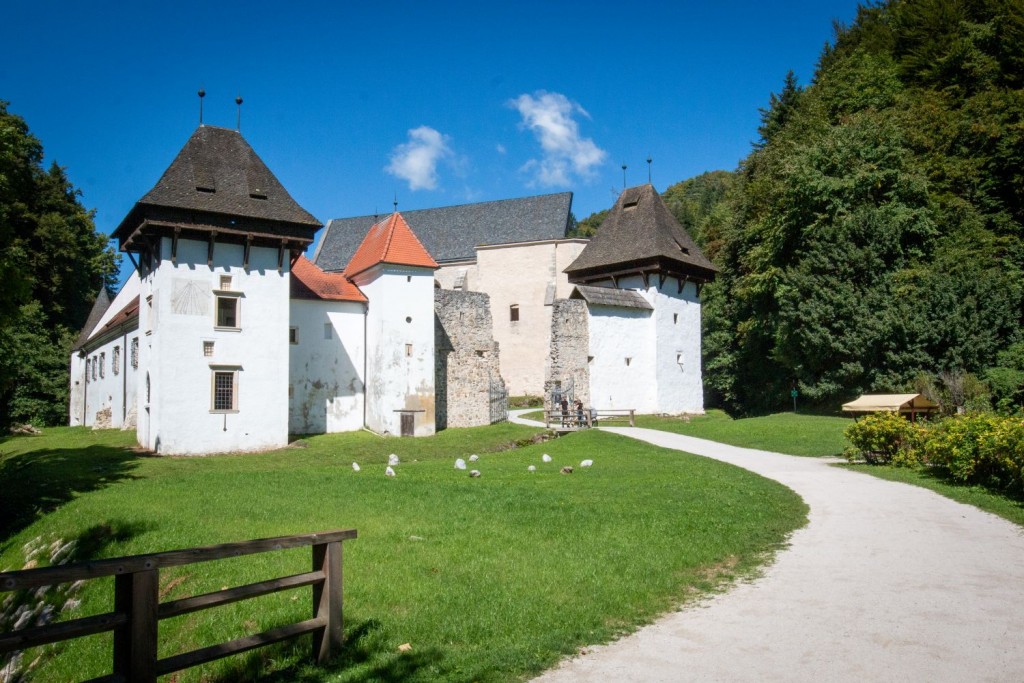
Žička Kartuzija is the oldest Carthusian monastery in Slovenia and in this part of Europe.
From the Charterhouse, the road continued past Škednje and Žiče, through fields on both sides of the Styrian highway (you probably know the name Tepanje because of the service area, not the nearby village) to Pem Inn, where Marko Pem served us beef fillet, bread dumpling roulade, and curd cheese dumplings, with a glass of house Blaufränkisch. For this very dish, they received the Okusi Rogle (Tastes of Rogla) award, since all the ingredients are local, practically within walking distance. The inn was originally opened by Marko’s grandmother in 1996. We heard that Marko makes top-notch burgers, which will definitely be worth another visit to Straža pri Oplotnici.
Local secrets: protected pond and refreshing gorge
Arina Pušnik from Oplotnica Tourism whispered to us that on our way back to Zreče, it was worth going off the path twice. First: just three kilometers south of Pem Inn lies the Natural biotope of Partovec. On six viewing decks and along the path around the pond, you can rest and observe the rich flora and fauna; fishing is prohibited, only informative catching for research purposes is allowed. Second: if you turn north in Oplotnica and park your bikes at the first hairpin, you can walk to the Oplotnica Gorge. Already at the threshold of autumn, the gorge itself was pleasantly cool, and the Oplotniščica stream (tested!) more than refreshing. And third: in Oplotnica Manor, you can stop at Magdalenca Café.
We ended the day at the Gorska reka guesthouse by the Dravinja River, which, at the edge of Pohorje, is still just a small stream. “A long time ago, there was a mill here, but before the new owners took over, the house was very rundown,” Melita Stiplošek told us about the story of the old building. “About five years ago, the house was completely renovated, but the thick walls and wooden beams remained. And because the renovation itself was already very green-oriented and also economically thoughtful, it wasn’t difficult to obtain the Slovenia Green certificate. But the process does open your eyes and gives the whole team directions we hadn’t considered before.” Forgive us, but after a long day, we craved the “cycling classic”: burger and beer. Something local would be back on the menu tomorrow, I promise.
A day for gravel
After (again) too heavy a breakfast, Gorska reka, under the mighty linden tree that the renovators luckily didn’t cut down, proved to be an excellent starting point. It stands right at the junction where you can leave the main road to Rogla and head toward Pohorje on less busy roads. The views of fields, pastures, and forests are wonderful, just be prepared that on about 18 kilometers you’ll have to climb a solid thousand meters of elevation. On this day, the electric bike Iza rented in Zreče proved to be an excellent invention. The asphalt in the upper part gives way to gravel, but it’s always firm and rideable with practically any bike. The last three kilometers bring back smooth asphalt with markings for the Rogla cycling challenge. Once you see the wooden bridge of the Treetop Walk above you, you really do feel almost like Primož Roglič at the finish of the Tour de France…
- Gorska Reka Guesthouse turned out to be the perfect choice for a cycling trip.
- Prepare for some four-legged locals to greet you on the trail.
- A refreshment stop in a log cabin right at the start of the Pohorje Treetop Walk.
On Rogla, you can also come to cycle “naked”
With coffee and homemade grape juice, we soothed our souls at Marija Jevšenak’s hut of the Rogla Pasture Community, also called the House of Pohorje Delicacies. Under the same (wooden) roof, products from 18 surrounding farms are sold. Cheese, dried fruit, wood-fired bread, spirits… and above all, Marija’s good cheer are reasons to stop. A little further on, in the area where skis and snowboards slide in winter, we met Jaka Tot, mountain bike instructor, guide, and rescuer, who introduced us to the cycling options on Rogla. “You can come to us naked, without anything,” he joked, and we cyclists were instantly on first-name terms.
In the Rogla Bike Park you can rent almost any kind of off-road bike (full suspension, electric, enduro, downhill; for men, women, and children) as well as protective gear (helmets, pads). Adrenaline seekers can try the marked trails (and pull uphill with a modern chairlift), or Jaka can load GPX tracks for one of ten tours in the area onto your phone. “Some want to ride for two or three hours, others all day. What you’re doing is quite a demanding full-day tour. For such riders, I usually also give a charger and tell them where they can stop for lemonade and recharge the battery in between,” explains Jaka. “Still others prefer the safe side and hire a guide or instructor. We can arrange everything, even if something breaks down.” The information that there’s also a service workshop at the top of Rogla will also be welcome to those cycling there on their own.
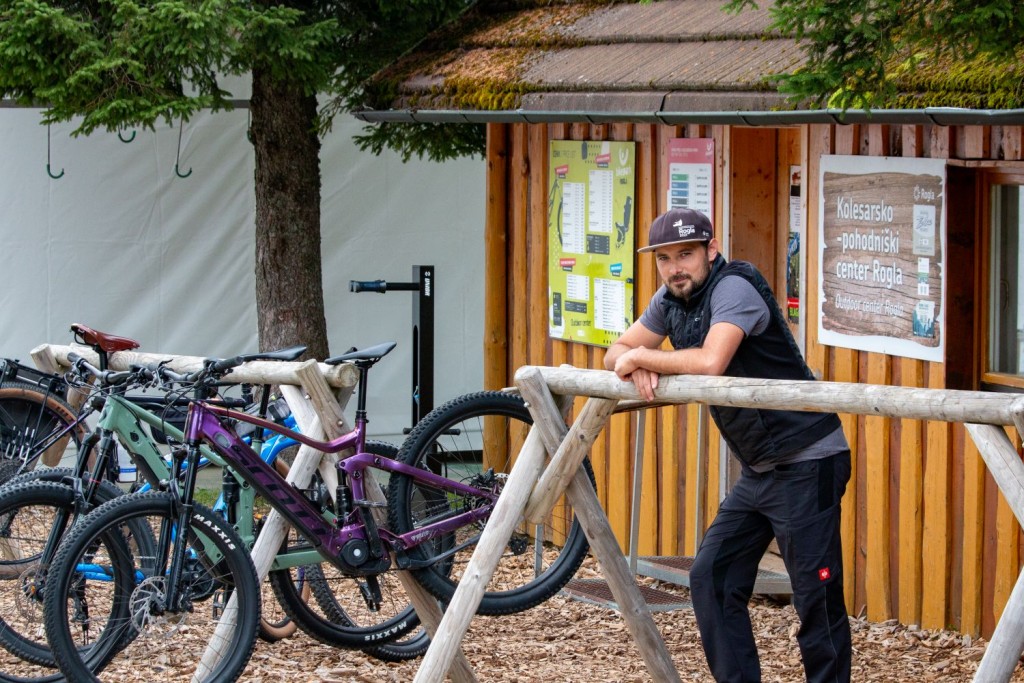
At the Cycling and Hiking Center on Rogla, you can rent everything from bikes to equipment.
Breakfast had worn off, so it was time to “recharge batteries” at Hotel Natura. When we tried to line up with the young footballers who often come to train at Rogla, the waitress smiled: “No, no, just sit down, we’ll bring it.” And they did: homemade bunka and cheeses, both from nearby farms. Excellent mushroom soup with porcini and chanterelles, and buckwheat bread with walnuts. The cutlery on the table just kept coming. Then venison in sauce with dumplings, pears cooked in wine and crushed hazelnuts, and for the finale, two such large pieces of blueberry strudel that we politely asked if one could be packed for the road. And just as well, since from Rogla it was all downhill… Advice: don’t trust the hosts in these parts: they don’t know how to offer “a little” or “half.”
Then came the reward for all the effort: instead of our own panting, we listened to the screech of tires on asphalt and the crunch of gravel under the wheels. Among the spruce trees, maple, hornbeam, and beech slowly appeared; now and then a brook gurgled from the ravine on the left, and later the forest gave way to meadows where cows were lazily chewing cud. On the way, we stopped at Smogavc to greet Katarina, our hostess in last year’s cycling story. And again, there was no escaping a slice of blueberry strudel. “Come on, you’ll manage one,” Katarina laughed. Smogavc holds the Slovenia Green certificate for both its guesthouse and accommodations. In the immediate surroundings grow local apples, pears, plums, peaches, sour cherries, and various berries, which are used in the kitchen to produce juice, vinegar, spirits, jams, and compotes, while the heated greenhouse provides vegetables, herbs, and spices.
Wine idyll under Pohorje
The ending of the trip was magical. As if just about 30 hours earlier, we hadn’t ridden only a kilometer away. North of Slovenske Konjice lies the Zlati grič estate with 70 hectares of vineyards. At the beginning of September, they had just started harvesting grapes for sparkling wines, which, by the way, mature behind the walls of the former Žička Kartuzija monastery. Sabina Ramšak, wine advisor, told us that an excellent vintage is expected: “The cellar capacity is 1,300,000 liters, and we produce between 600,000 and 700,000 liters annually. This year, we hope for the upper limit.”
About 90 percent of the wine produced here is white, led by Rhine and Welschriesling, Sauvignon, Chardonnay, Pinot Gris and Pinot Blanc, and Traminer. Among the reds are the indigenous Blaufränkisch and Pinot Noir. Winemaking in this area has a centuries-old tradition. After Slovenia’s independence, the Zlati grič company was formed from the local agricultural cooperative, and in 2009, a new wine cellar was built in Škalce, built into the earth and blended with the sunlit hills. This provides a naturally low, constant temperature, while where the spaces meet daylight, the intersections of curved roofs and straight walls create unusual shapes. Would you like to taste their wines? They offer guided tours of the wine cellar and tastings. Hungry? Just over the first hill among the vineyards, you’ll find the Zlati grič restaurant. Not planning to drive home? Book an apartment in the 15th-century Zlati grič Wine-growing Mansion with views of the hills, Konjice Mountain, and Pohorje. Cheers!
- Zlati grič’s modern wine cellar is tucked into the hills above Slovenske Konjice.
- Enjoy the views of the vineyards from the 15th-century Wine Mansion.
- Enjoy a guided tour and wine tasting with stunning views of the vineyards and Pohorje.
Maps and descriptions of cycling routes are available at www.rogla-pohorje.si (select ‘Cycling routes’ under the filter ‘Trails’). You can also pick up classic printed maps with marked cycling trails at the Zreče Tourist Information Center.

 Experiences
Experiences Destinations
Destinations Accommodation
Accommodation